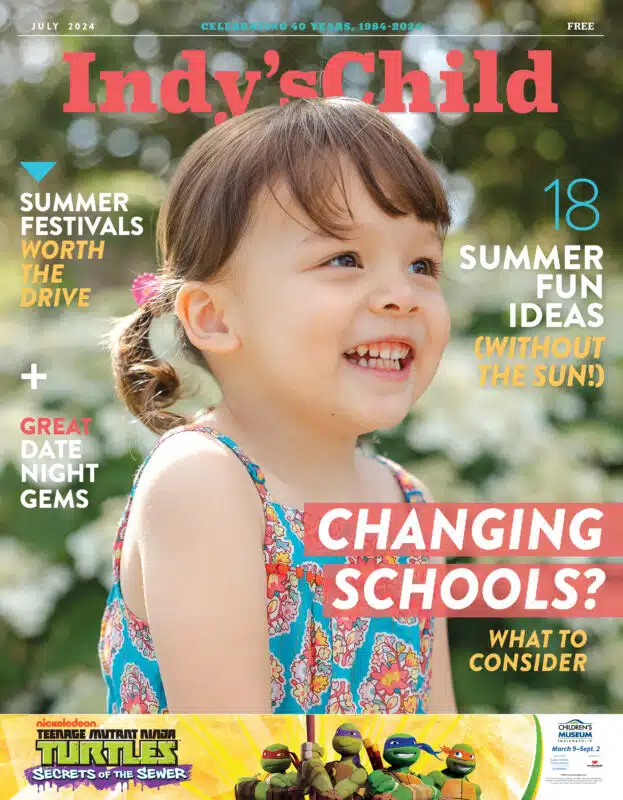If you’re considering a Montessori education for your child, you may be wondering exactly how this method is different from that of a more typical classroom. What are the hallmarks of Montessori that would guide your child’s day?
1. Child-centered learning
In the Montessori method, learning is led by the individual interests of the child and guided by teachers who fit into the child’s world – rather than the other way around. You will most likely find teachers interacting on the child’s level, on the floor, rather than teaching children as a group. “The Directress is the name we refer to as the ‘teacher’ of the classroom,” says Kris Spence, Founder and Directress at Indiana Montessori Academy in Carmel. “Montessori Directresses are called such because we truly believe the child is leading his or her learning and the Directress is there to guide the classroom and the community of children based on their individual interests.”
Kim Szymczak’s daughter Lauren is currently in the eighth grade at the Montessori School of Westfield. “My husband and I chose a Montessori education to give our children the opportunity of free expression in an educational environment,” says Szymczak. “We embraced the Montessori philosophy of independence and autonomy, free expression, leadership building and the ‘work at your own pace’ style that Montessori schools offered.”
2. Progressing at one’s own pace
According to the American Montessori Association, the teacher is aware of each student’s progress toward a particular skill and knows when to step in to offer extra help and when to provide additional challenges as a student is ready to move on to the next skill. “Montessori education differs from other types of education in that its aim is not mental growth, but helping the child reach his full potential,” says Carrie Wisser, Head of School and the Elementary Directress at Community Montessori School in Fishers. “This is achieved by allowing the child to work according to his own clock. [Maria] Montessori understood that the child constructs himself and that the role of the adult is to assist in that construction.”
3. Work cycles
In order to allow full concentration and the opportunity to explore interests and work freely in their environment, students typically work in cycles. “Children work continuously through an uninterrupted morning work cycle of 3 hours,” says Spence. “The afternoon work cycle, for children who stay all day, is at least another 2 hours of uninterrupted work.”
4. Mixed ages
Children are grouped according to age, however, each group encompasses a wider range of ages – typically a three year span. Older kids mentor younger kids. This allows younger children to have a “peek” at what’s to come. “In primary, that is 3-6 years of age. In elementary, children are mixed communities of 6-9 and 9-12 years of age,” says Spence. “I marvel at how the children form a community of learning and show leadership and mentoring to younger children.”
5. Real-life skills
In the classroom, children use skills to help others and keep the community running smoothly. They prepare their own meals, clean up after themselves and help others. They know where to find learning materials and where to return items when finished. “The most important idea to keep in mind is that every unnecessary help is a hindrance to independence,” says Wisser. “We are there to aid life: helping the child reach his full potential and become independent.”
With skill mastery comes confidence and a readiness for a world beyond the classroom. Szymczak says, “Each school provided our children with the ability to gain self confidence in their own achievements, compassion towards others and a teaching style that fostered mastering concepts before advancing on.”
Choosing an educational environment that best meets your child’s needs is an important decision. Finding the right setting can make all the difference in helping kids thrive in and out of school. To learn more about the Montessori method, begin your search by visiting the American Montessori Society website (www.amshq.org) or Association Montessori International/USA (www.amiusa.org).







